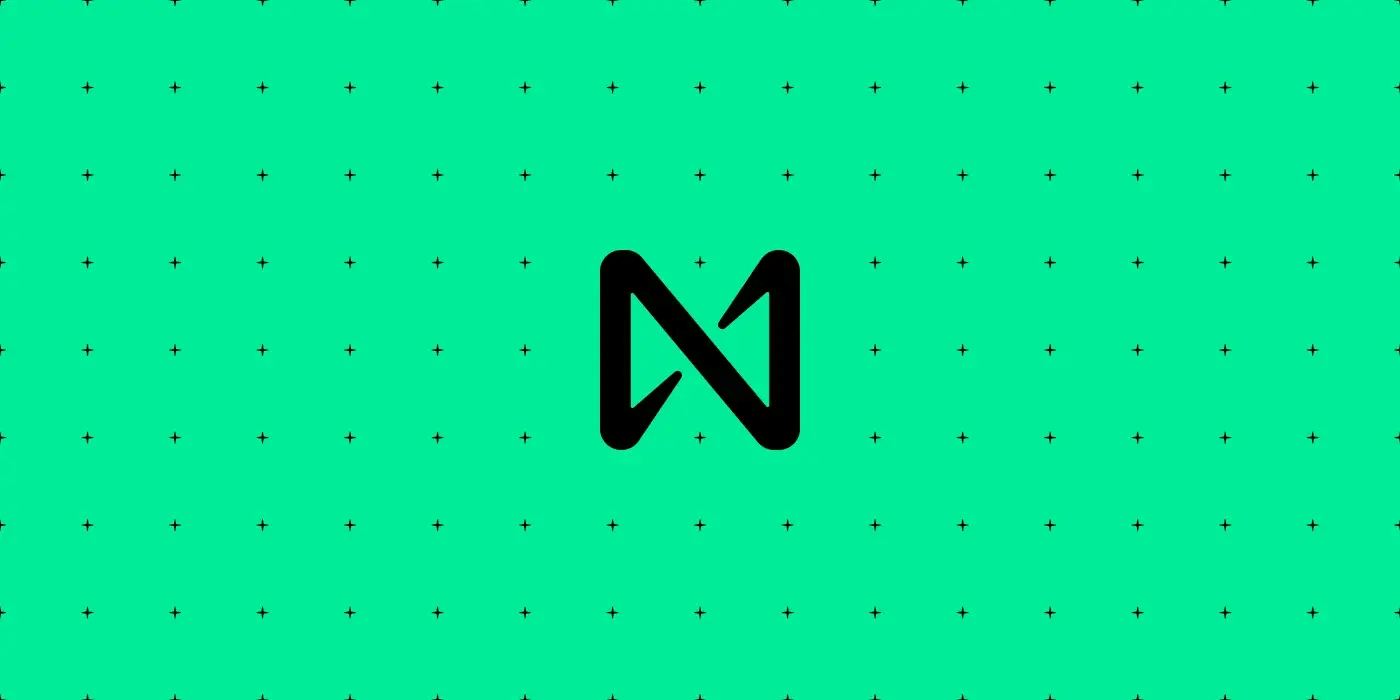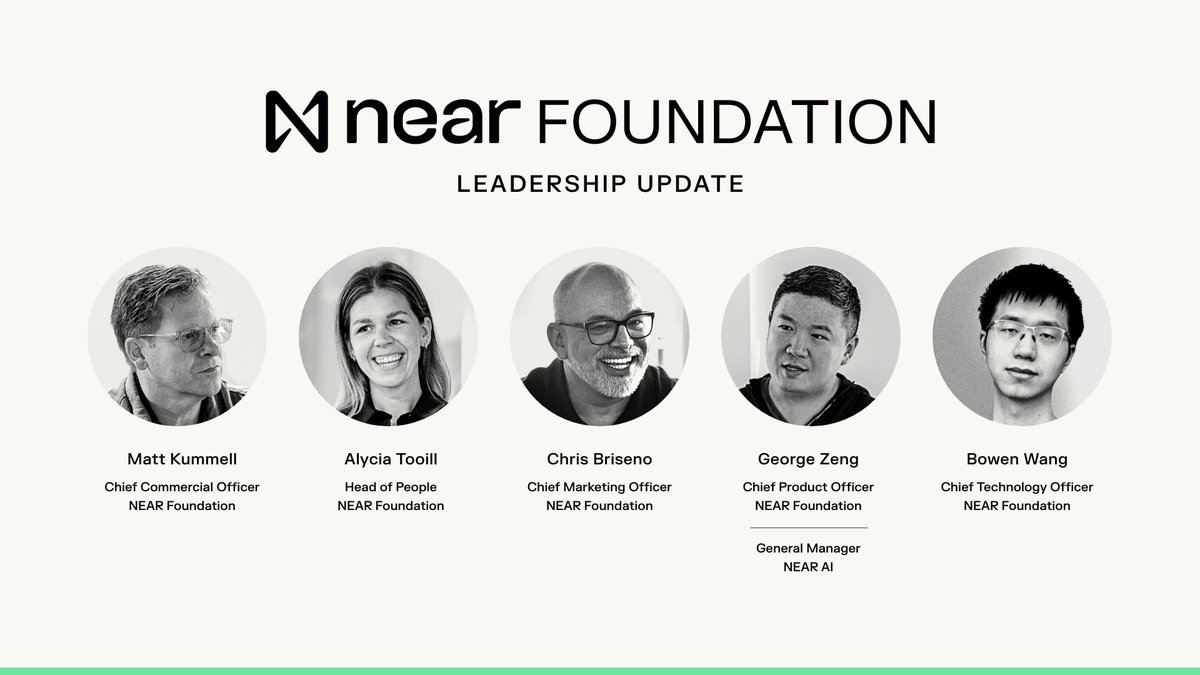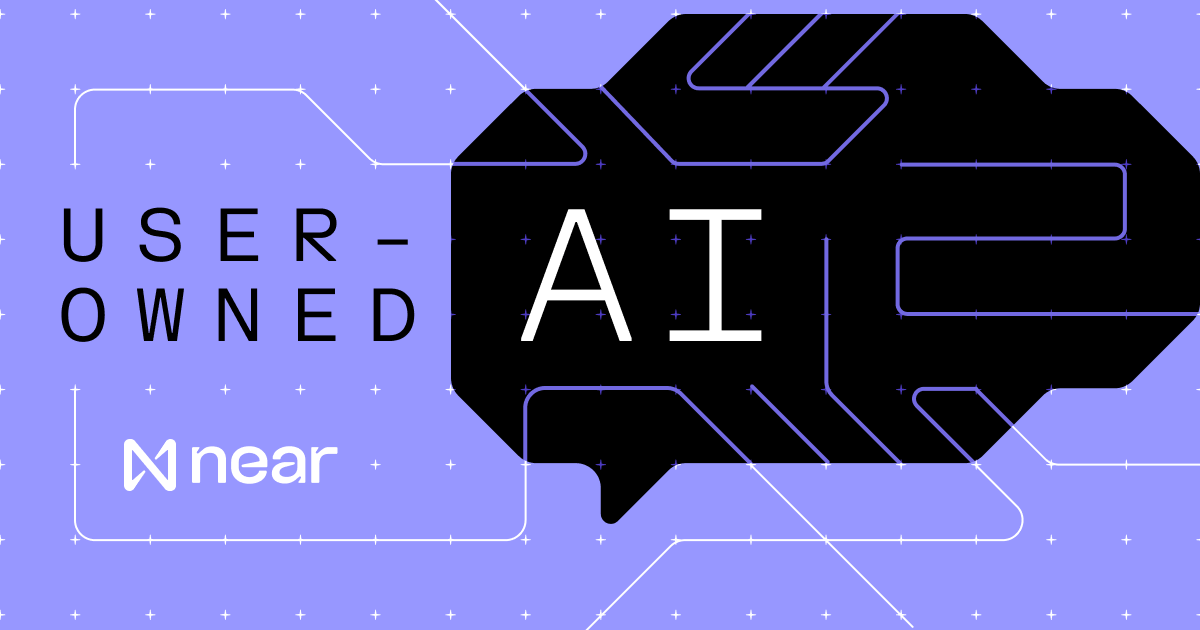
Author: Zen, PANews
In mid-October 2025, the NEAR Foundation, at a critical turning point in its ecological development, made one of the most significant high-level personnel adjustments in recent years, appointing five senior industry professionals to oversee key areas such as product, business, marketing, technology, and human resources.
This management overhaul across multiple key areas is partly due to the scarce attention of developers and funding, as well as increasingly fierce competition within the industry. On the other hand, it is also related to NEAR's strategic shift towards products and ecosystems centered around "User-Owned AI," aiming to translate years of technological reserves into scalable applications.
As Illia Polosukhin, co-founder of the NEAR protocol, stated, the addition of the five new executives will help transform technology into products, move beyond the Web3 circle, and promote the global implementation and popularization of AI-native products focused on privacy protection.
"Five Tigers" Take Office: Covering Product, Market, and Technology

In recent years, the NEAR Foundation, which has focused on underlying technology, made a notable personnel adjustment in October 2025, appointing five senior executives to its leadership team. The new executives previously held key positions at well-known institutions such as Bloomberg, Digital Currency Group (DCG), Flipside Crypto, and dYdX. Specifically:
Matt Kummell: Chief Commercial Officer, with extensive experience in traditional finance and the crypto sector, previously served as Senior Vice President of Operations at DCG and was a board member of DCG's mining company Foundry and blockchain media CoinDesk. At the NEAR Foundation, he will develop a clear business strategy to help the NEAR ecosystem achieve broader market adoption.
Alycia Tooill: Head of People, has years of experience in HR within tech startups and blockchain companies, having served as HR Director at Wyre and Senior Vice President of People at blockchain data analytics company Flipside. As the NEAR ecosystem and business landscape expand, attracting and retaining tech talent in AI and privacy computing becomes crucial.
Chris Briseno: Chief Marketing Officer, has practical experience in crypto marketing, previously serving as Chief Marketing Officer at blockchain data platform The TIE. Briseno is familiar with marketing strategies and community operations in the crypto industry, and his addition aims to enhance NEAR's global visibility and user recognition, strengthening NEAR's market appeal and translating technological advantages into user scale and ecosystem activity.
George Zeng: Chief Product Officer and General Manager of NEAR AI: Zeng has been appointed Chief Product Officer of the NEAR Foundation and concurrently serves as General Manager of the newly established NEAR AI department. He has a background in product management and entrepreneurship spanning Web2 and Web3, having worked as a product manager at Facebook and served as Chief Operating Officer at decentralized exchange dYdX. His appointment reflects NEAR's strong emphasis on AI, and as the head of the NEAR AI department, Zeng will accelerate the development and market investment in privacy-protecting AI products.
Bowen Wang: Chief Technical Officer, as one of the core members of the NEAR technical team, has been appointed Chief Technical Officer of NEAR and leads core R&D work as the founder of the dedicated R&D team "NEAR One." Bowen is a key member of NEAR's early engineering team, with technical expertise covering blockchain protocols, sharding technology, and other underlying architectures.
It is evident that the five new executives bring decades of deep experience in their respective fields of product, business development, marketing, talent, and underlying technology. Their addition enables NEAR to form a diverse and complementary leadership team, collectively driving NEAR's critical transformation from the "technical architecture phase" to the "product implementation and commercialization phase."
"User-Owned AI" Strategy
The blockchain industry has seen a new trend of integrating with artificial intelligence (AI) over the past two years. As a co-creator of the Transformer architecture, Illia has a profound technical background and influence in the AI field, naturally leading NEAR to transition from a sharded public chain to one that integrates with AI. In mid-2024, the NEAR Foundation explicitly proposed the concept of "User-Owned AI," believing that the future of AI technology should be controlled by users rather than monopolized by a few tech giants.

NEAR chose to address this issue with the goal of building an open AI infrastructure on the blockchain, returning the dominance of data and intelligence to users to avoid the emergence of "AI oligarchs." Consequently, NEAR initiated a phased strategic adjustment in 2024, shifting its focus from purely improving blockchain underlying technology to the integration of "blockchain + AI"—committed to becoming a platform where users control AI.
To implement this strategy, the NEAR Foundation established a dedicated team and project structure for AI in 2024. This includes the "NEAR.ai R&D Lab," led by Illia and co-founder Alex Skidanov, which concentrates company resources on foundational research and prototype development related to AI. The lab is initially focused on creating an "AI Developer" system that automatically builds end-to-end Web3 applications based on user intent using generative AI.
NEAR has planned and initiated a series of specific business directions around "User-Owned AI," including privacy-protecting AI computing, core infrastructure development, and the integration of AI with on-chain functionalities. For example, the blockchain intents feature launched by NEAR can be seen as an on-chain interface for AI agents, currently being used to support the first batch of autonomous AI agents in making independent decisions and executing operations on-chain. Intents serve as a universal liquidity layer, allowing users to specify target intents, with the system automatically completing transaction processes in a multi-chain environment. The NEAR Foundation revealed that as of now, the cumulative transaction volume processed by NEAR Intents has exceeded $2 billion, with expectations of doubling by the end of 2025.
The NEAR Foundation has also established an incubator and investment department, HZN, focused on AI projects to support early-stage Web3 x AI initiatives.
The incubation plan quickly yielded results. In June 2025, the NEAR Horizon AI incubation program announced six selected teams. These teams include: Mizu, building an open data layer; Pond, using graph neural networks to analyze on-chain data; Nevermined, designing payment infrastructure for AI commerce; Hyperbolic, providing open AI cloud services; Ringfence, enabling creators to monetize their works; and Exabits, offering GPU computing.
In terms of funding, the NEAR Foundation announced the launch of the NEAR AI Agent Fund on February 6, 2025. This fund plans to deploy $20 million in liquidity on-chain, focusing on expanding the development of fully autonomous and verifiable agents built on NEAR technology.
Through these initiatives, NEAR has gradually completed the transition from focusing on technology itself to monetizing and applying technology from 2024 to 2025.
Opportunities and Challenges for the NEAR Foundation
Over the past year, the NEAR Foundation has shifted its focus from building underlying infrastructure to User-Owned AI and product implementation. In recent months, NEAR has continued to advance in the direction of "User-Owned AI."
On September 16, the decentralized prediction network Allora Network announced its "collective intelligence/prediction layer" integration into the NEAR ecosystem, aiming to provide usable prediction signals for applications and AI agents in scenarios such as trading, risk control, and routing. In early August, the NEAR Foundation partnered with IQ AI to explore "agent assetization" and multi-chain execution: one end supports agents in issuing and maintaining their own economies on-chain, while the other leverages NEAR Intents and underlying interoperability to encapsulate complex actions like cross-chain trading, collateralization, and market-making into an "intent → automatic execution" process.
During the same period, the NEAR team released the annual "State of AI on NEAR: 2025 Update," identifying AI Agents and verifiable agent protocols as the main focus for the year, emphasizing collaboration with external liquidity (including Ethereum L2, etc.) to enable agents to naturally call funds and functions across multiple chains. To meet these application-side demands, NEAR continues to promote the practical implementation of Chain Signatures. This capability allows NEAR contracts to sign and initiate transactions on other chains, facilitating the cross-chain flow and composable routing of native assets, providing an engineering foundation for subsequent cross-chain execution, clearing, and settlement of AI agents.
In terms of team size and organizational structure, NEAR underwent a large-scale adjustment in 2024, officially disclosing a reduction of about 40% of its workforce, aiming to concentrate resources on fewer but more impactful matters. The recent appointment of multiple key executives clearly aims to further accelerate the strategic adoption of user-owned AI and privacy-friendly AI-native products.
At the same time, in the developer ecosystem, NEAR needs to compete with other public chains such as Ethereum, BSC, Solana, and Avalanche for quality projects and developer resources. Over the past two years, the number of monthly active developers on NEAR has been on a downward trend, and there has been a significant outflow of cross-chain developers in recent months, approaching the low range of the past year, shifting towards "contraction and restructuring."

Now, various public chains (L1/L2 and application chains) are "competing" to the extreme in terms of performance, cost, toolchains, and distribution channels, making funding and developer attention increasingly scarce. Whether the User-Owned AI narrative can be effective may soon put the NEAR Foundation's execution capabilities and product delivery to a significant test. How to stand out in the fiercely competitive Web3 AI arena will be a key issue for the new leadership team to address.
免责声明:本文章仅代表作者个人观点,不代表本平台的立场和观点。本文章仅供信息分享,不构成对任何人的任何投资建议。用户与作者之间的任何争议,与本平台无关。如网页中刊载的文章或图片涉及侵权,请提供相关的权利证明和身份证明发送邮件到support@aicoin.com,本平台相关工作人员将会进行核查。




